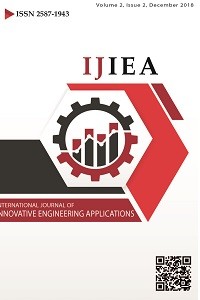Abstract
References
- [1] Lee NH, Kim S, Choe BH, Yoon KB, Kwon D. Failure analysis of a boiler tube in USC coal power plant. Eng Fail Anal 2009;16:2031-5.
- [2] Rahimi M, Khoshhal A, Shariati M. CFD modeling of a boiler’s pipes rupture. Appl Therm Eng 2006;26:2200-492.
- [3] Jones DRH. Creep failures of overheated boiler, superheater and reformer tubes. Eng Fail Anal 2004;11:873-93.
- [4] Thielsch H, Smoske R, Cone F, Husband J. Failure analysis of superheater outlet header. Adv Mater Process 2000;157:43-4.
- [5] Port RD, Herro HM. The NALCO guide to boiler failure analysis. 2nd ed. McGraw- Hill Inc; 2011.
- [6] Davis JR. Refractory metalls and alloys. ASM specialty handbook: Heat-resistant materials; 1997.
- [7] Viswanatan R. Damage mechanisms and life assessment of high temperature components. Metals Park, Ohio: ASM International; 1995.
Abstract
The fundamental role of superheater pipes in turbines is to produce
superheated steam and direct it to the turbine. These parts are subjected to
damage due to the creep, corrosion and oxidation resulting from combustion
exhaust. In this research, the affecting factors of failure in a plantain
superheater pipe was investigated. Wet chemistry and SEM/EDS analysis were used
to investigate the combustion exhaust deposits and a scanning electron
microscope (SEM) was used to study the fracture surfaces in order to determine
the mechanisms of the fracture. The results showed that exposure of the
superheater pipes at temperatures higher than the standard limits caused
strength reduction and occurrence of plastic deformation. Furthermore, the
combustion exhaust deposits, caused reduction in heat transfer, in addition to
severe corrosion as well as cavity formation due to the presence of hydrogen
were the main reasons of the pipes failure.
References
- [1] Lee NH, Kim S, Choe BH, Yoon KB, Kwon D. Failure analysis of a boiler tube in USC coal power plant. Eng Fail Anal 2009;16:2031-5.
- [2] Rahimi M, Khoshhal A, Shariati M. CFD modeling of a boiler’s pipes rupture. Appl Therm Eng 2006;26:2200-492.
- [3] Jones DRH. Creep failures of overheated boiler, superheater and reformer tubes. Eng Fail Anal 2004;11:873-93.
- [4] Thielsch H, Smoske R, Cone F, Husband J. Failure analysis of superheater outlet header. Adv Mater Process 2000;157:43-4.
- [5] Port RD, Herro HM. The NALCO guide to boiler failure analysis. 2nd ed. McGraw- Hill Inc; 2011.
- [6] Davis JR. Refractory metalls and alloys. ASM specialty handbook: Heat-resistant materials; 1997.
- [7] Viswanatan R. Damage mechanisms and life assessment of high temperature components. Metals Park, Ohio: ASM International; 1995.
Details
| Primary Language | English |
|---|---|
| Subjects | Engineering |
| Journal Section | Articles |
| Authors | |
| Publication Date | January 10, 2019 |
| Submission Date | October 12, 2018 |
| Published in Issue | Year 2018 Volume: 2 Issue: 2 |
Cite
This work is licensed under CC BY-NC 4.0


